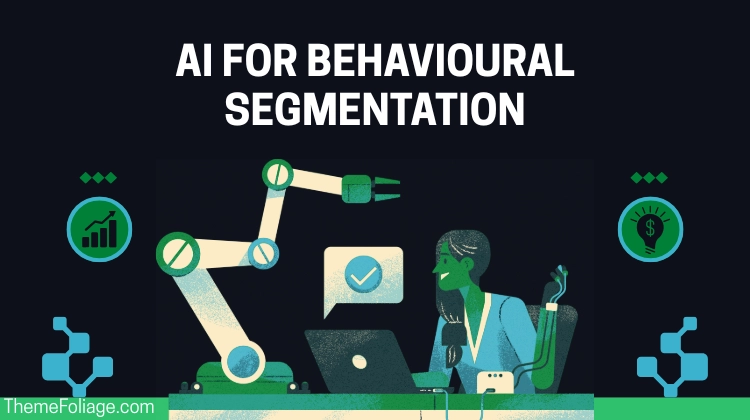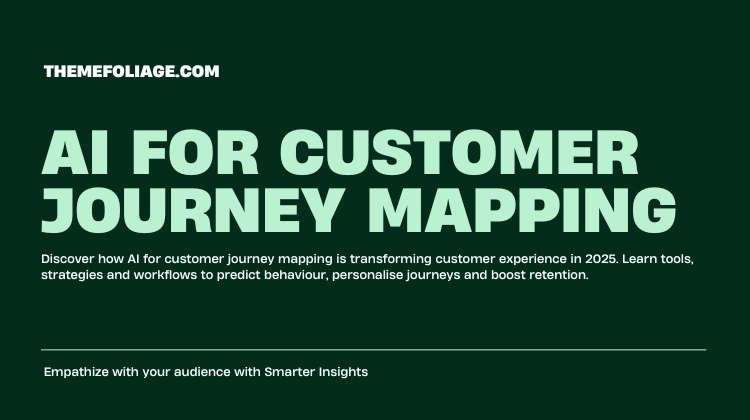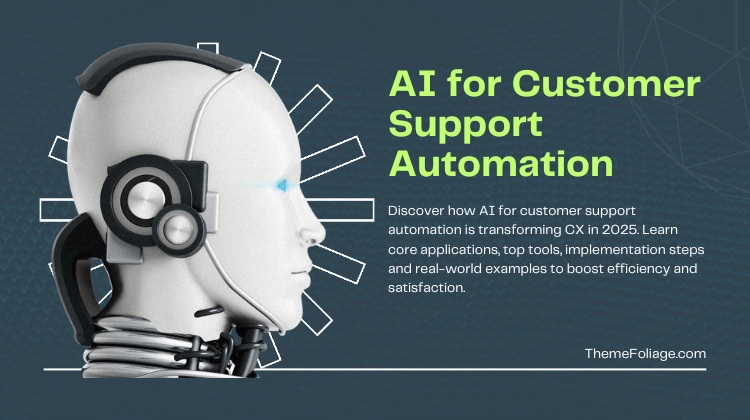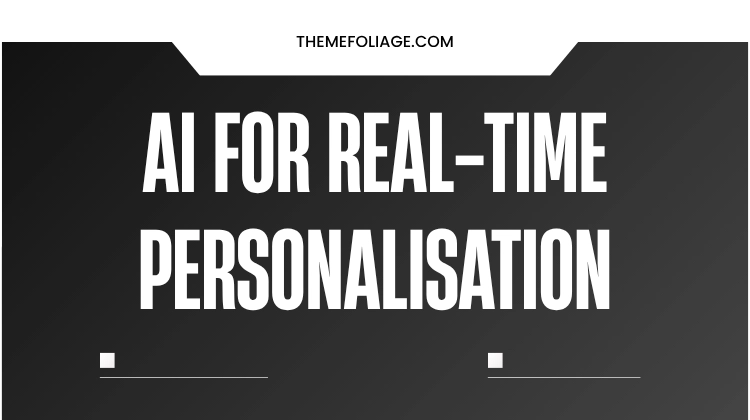Behavioural segmentation is the difference between broadcasting and conversing. In 2025, when audiences are distracted and attention is scarce, grouping users by what they do and why they do it produces far better results than groups built only on age, location or income.
AI for behavioural segmentation elevates this practice by analysing interactions across channels, detecting intent signals and creating dynamic segments that update in real time.
This post explains why behavioural segmentation matters, how AI enables it, which tools to use (note: prices may change), a step‑by‑step implementation workflow and practical tips to avoid common pitfalls.
Why Behavioural Segmentation Outperforms Demographics
Demographics tell you who the customer is; behaviour tells you what they’re trying to achieve. Behavioural segments are defined by observable actions and intent signals, such as:
- Pages visited and sequence patterns
- Frequency and recency of interactions
- Content consumed and time spent per asset
- Feature usage or product interactions (for SaaS)
- Cart activity, abandoned flows and micro‑conversions
- Channel engagement patterns (email opens, ad clicks, push responses)
When you segment by behaviour, you can deliver contextually relevant messages that meet users where they are in the journey. That creates higher conversion rates, lower acquisition cost and improved customer lifetime value.
How AI Makes Behavioural Segmentation Practical at Scale
AI is the engine that turns noisy interaction logs into actionable segments:
- Pattern discovery: Unsupervised learning (clustering) finds natural groupings based on interaction vectors you might not have considered.
- Intent scoring: Supervised models predict conversion propensity, purchase intent or churn risk and assign continuous scores.
- Real‑time updates: Stream processing and online learning update segment membership as new events arrive.
- Cross‑channel stitching: AI links behaviour across devices and channels using probabilistic matching or deterministic IDs inside a CDP.
- Micro‑segment activation: Systems create thousands of micro‑segments and surface only the most actionable ones to campaign managers.
- Explainability: Modern models provide feature importance or reason codes, so marketers understand why a user belongs to a segment.
The result is dynamic segmentation that adapts to seasonality, campaigns and evolving user intent.
Core Use Cases Where Behavioural Segmentation Wins
- Acquisition personalisation: Serve creatives tailored to users who viewed pricing but didn’t convert, versus users who only visited blog posts.
- Onboarding optimisation: Trigger product‑tips and micro‑learning to users who tried but failed to complete onboarding tasks.
- Churn prevention: Identify declining engagement patterns and deliver targeted win‑back offers before customers leave.
- Cross‑sell and upsell: Recommend complementary products to users who frequently view a product category or have repeated small purchases.
- Retention campaigns: Tailor loyalty incentives for high‑value but low‑engagement customers.
- Look‑alike expansion: Use behavioural cohorts to train models that find high‑intent look‑alikes across paid channels.
Recommended AI Tools (2025) — prices may change
| Tool | Function |
|---|---|
| Optimove | Behavioural CRM, predictive models and journey orchestration |
| Segment (Twilio) | Customer data platform, event ingestion and audience activation |
| Herdify | Community and offline influence mapping for behavioural signals |
| MadKudu | Lead and behaviour scoring for B2B/SaaS |
| Pecan AI | No‑code predictive modelling on behavioural data |
| SAS Customer Intelligence 360 | Enterprise behavioural segmentation and simulation |
| Ortto | Behavioural triggers and email/SMS orchestration for SMBs |
Note: pricing tiers change frequently; verify current plans before purchasing.
Step‑by‑Step Implementation Workflow
- Define outcomes and signals
Decide what you want to predict or improve, conversion, churn, AOV, trial to paid, and list the events that indicate intent. - Consolidate event data in a CDP
Centralise clicks, page views, email events, purchases and product telemetry into a CDP or data warehouse. Ensure consistent schema and timestamp fidelity. - Clean and enrich data
De‑duplicate identities, normalise event names and enrich with first‑party attributes (subscription level, tenure) and privacy‑compliant third‑party signals where permitted. - Explore patterns with clustering
Run unsupervised clustering to discover natural behavioural cohorts. Validate clusters qualitatively to ensure marketing relevance. - Build predictive intent models
Train supervised models to predict conversion propensity, churn risk or upsell likelihood. Use holdouts and back‑testing to measure uplift. - Create dynamic segment definitions
Translate model scores and cluster membership into named segments (e.g., “High‑Intent Pricing Visitors”, “Dormant VIPs”). Set TTL and join rules. - Activate and personalise
Push segments to ad platforms, email, onsite personalisation engines and CRM. Deliver tailored creatives, CTAs and journeys per segment. - Measure causal impact
Run holdout tests or uplift experiments to quantify the incremental value of behaviourally targeted campaigns. - Iterate continuously
Retrain models, refresh clusters and refine features as new behaviours emerge.
Measurement and Governance
Track lift metrics: conversion rate by segment, incremental revenue, cost per acquisition, and churn delta.
Monitor model drift: set alerts when prediction accuracy degrades.
Maintain privacy posture: implement consent checks, data minimisation and retention policies.
Keep a human‑in‑the‑loop: product owners and marketers should review segment definitions monthly.
Practical Tips and Common Pitfalls
- Start with high‑value journeys: prioritise one funnel (trial → paid or checkout) to show ROI quickly.
- Avoid hyper‑fragmentation: thousands of micro‑segments sound powerful but can fragment data, making models unstable. Consolidate into actionable groups.
- Label quality matters: for supervised intent models, consistent and accurate outcome labels are essential.
- Respect privacy: always honour consent and provide opt‑outs for behavioural targeting.
- Combine behaviour with value: weight segments by lifetime value to avoid optimising only for short‑term conversions.
- Explainability sells: provide marketers with understandable reasons for segment membership to build trust.
Real‑World Example (Concise)
A B2B SaaS firm consolidated product telemetry, trial behaviour and marketing interactions into a CDP. Using clustering, they found a “Feature‑Explorer” cohort that tried multiple advanced features but didn’t convert. A targeted onboarding series and a personalised demo offer to that cohort lifted trial‑to‑paid conversions by 28% in 8 weeks.
Final Thoughts
AI for behavioural segmentation turns raw interactions into predictive, actionable audiences. It moves marketing from blunt demographic casts to precise, intent‑driven conversations.
Start small, protect privacy, validate impact with experiments and scale the segments that drive measurable business outcomes. In 2025, the brands that win will be those that listen to behaviour first, and personalise every touch accordingly.



